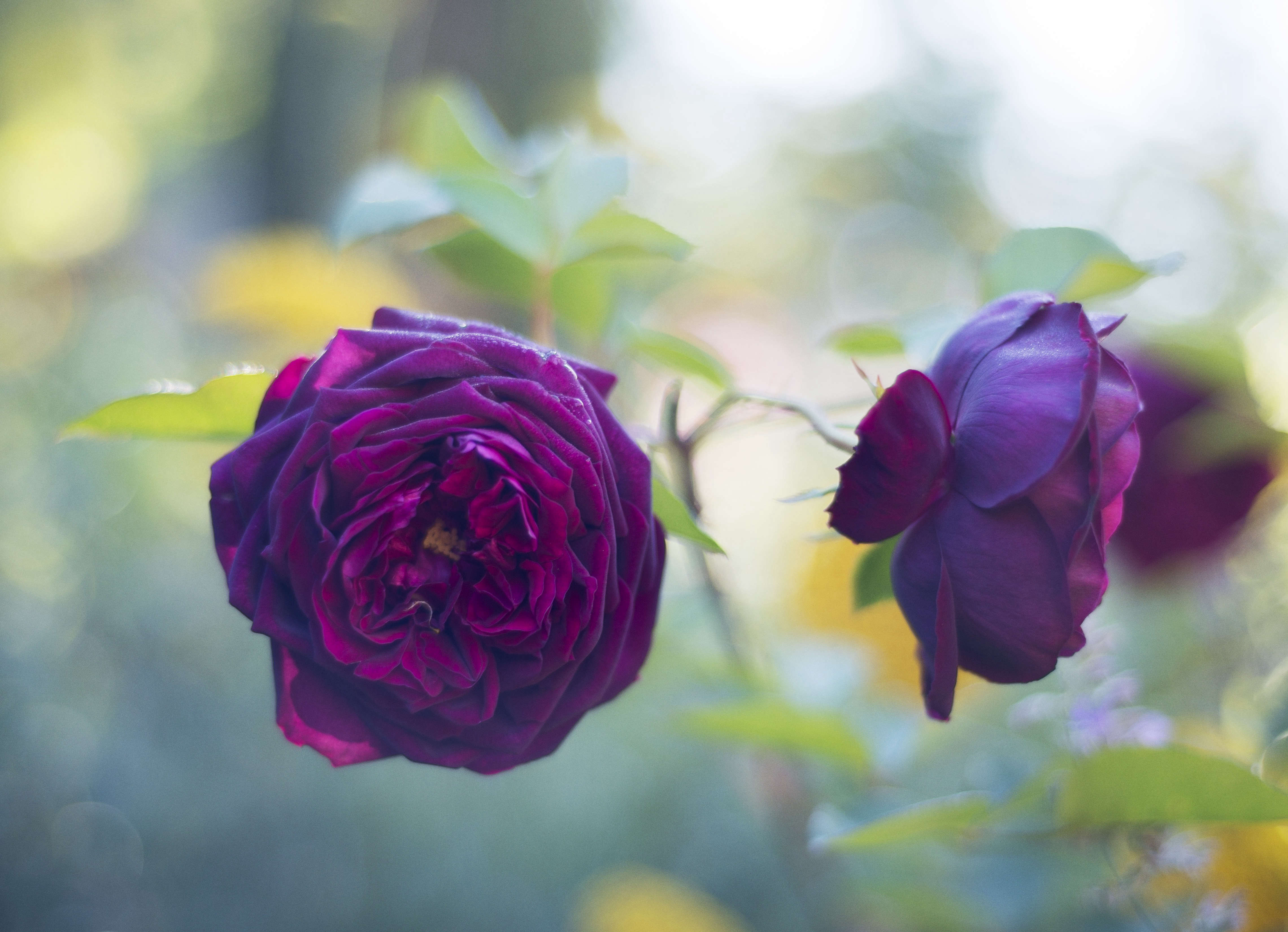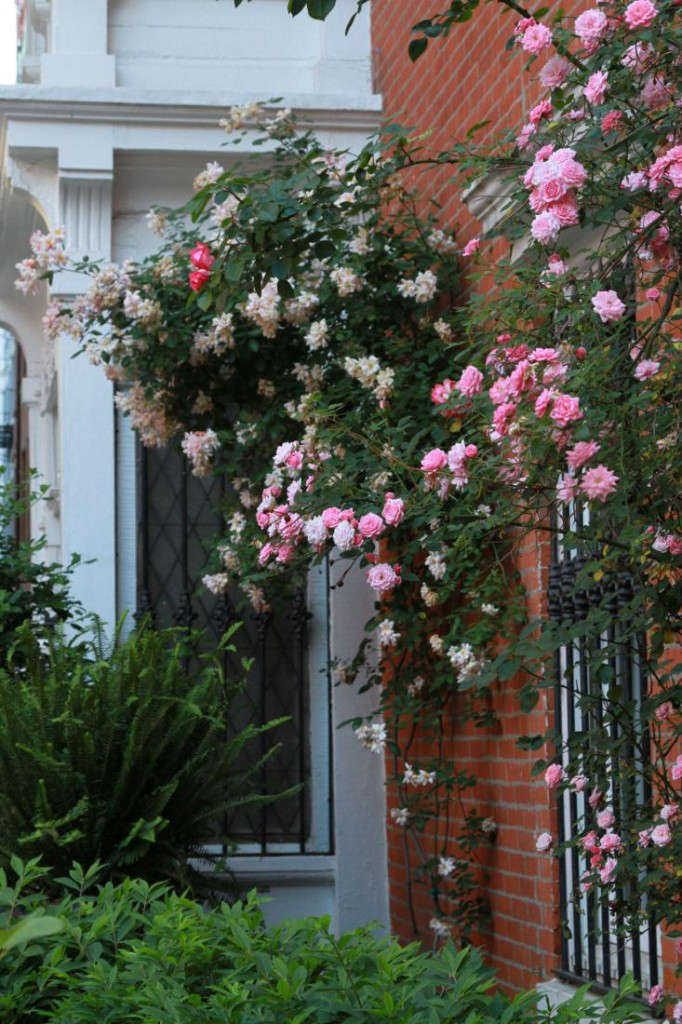Rose, Rosa: “Poets’ Muse”
Gertrude Stein once wrote in a poem, “A rose is just a rose is just a rose.” But as much as I hate to quarrel with Ms. Stein, in this case I must politely disagree. This woody, perennial flower is a popularity-contest champion; with more than 100 species and thousands of cultivars, roses come in as many varieties and colors as there are poems written about them—which is saying a lot.
Above: Photograph by Matthew Williams for Gardenista. David Austin’s ‘The Prince’ is an English shrub rose. “Flowers at first the deepest, richest crimson imaginable, but quickly turning to an equally rich royal purple not to be confused with the sometimes jarring purples of many modern roses,” says breeder David Austin.
Above: ‘Pat Austin’, another rose bred by David Austin, can be trained as either a shrub or a climber. Photograph by Tom Kubik for Gardenista.
From the Freedom Roses you can buy at the local grocery store (and cherish for less than a week before the poor things start to go bald) to endangered and heritage species such as the German Tausendschon with its rambling, neon pink and white clusters, there is a wide selection of roses suited to each region. (N.B.: For more, see our posts on the best roses to grow in Texas, Northern California, and the Northeastern US.
Above: Samantha Greenwood grows more than 80 varieties of roses in her garden in northern California. For more, see A Riot in Berkeley, Roses Gone Wild. Photograph by Mimi Giboin for Gardenista.
Roses are “hippy” not only because they sometimes look like they’re wearing tie-dye, but because they’re uniquely attuned to the earth. Be careful to choose the right kind for your climate, or you might catch a case of bad vibes, or worse yet, stems without buds.
Above: Roses in bloom in Brooklyn. Photograph by Marie Viljoen for Gardenista. For more, see Curb Appeal: 11 Front Garden Ideas to Steal from Brooklyn.
Cheat Sheet
- Before you select a species, check out whether it is known for sporting robust orange or yellow hips in the winter. If so, you will have a vitamin C-rich ingredient for infused honey, tea, oil, balm, or jam.
- Climbing and shrub varieties can be used for camouflage and to create privacy.
- Pair with lavender to throw deer off roses’ too-tempting scent.
Keep It Alive
- Rosa rugosa hedges are hardy to zone 3; pink roses to zone 5; yellow roses to zones 4-9.
- Roses need full sun and like 90 inches of rainfall per year. Adjust your watering schedule according to your climate.
- Plant or move in spring or fall.
Above: Photograph by Erin Boyle.
You can certainly grow roses from scratch, but at least consider getting a head start with a transplant. These can be planted in spring or fall, and need from 15 to 18 inches of space, full sunlight guaranteed, and generous soakings of water. In the Northeast, try the pink Yankee Lady or the Beverly, the frothy whitish Perl d’Or, or for double trouble, the double-blooming fuchsia colored Jasmina. Warmer areas to the West are suited for the tangerine yellow Lady Emma Hamilton, the classic pink and fragrant Mary Rose, and the nearly purple Dark Lady, among others.
For more of our favorite (and highly perfumed) roses, see:
- DIY Climbing Roses: From Trellis to Vase on Cape Cod.
- Gardening 101: How to Prune Roses.
- The 7 Best Climbing Roses for Your Garden.
N.B.: Considering some new plants for your garden? Our Garden Design 101 guides can help:
- See Peony 101 for showstopping blooms.
- Need more information on planting, care & design? Use our Perennials 101 guide for everything you need to know.

















Have a Question or Comment About This Post?
Join the conversation (1)